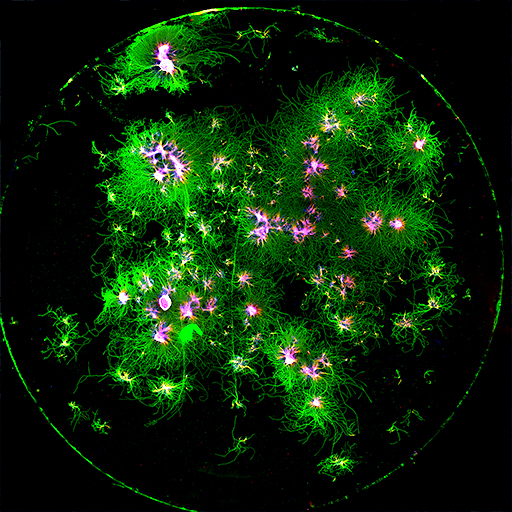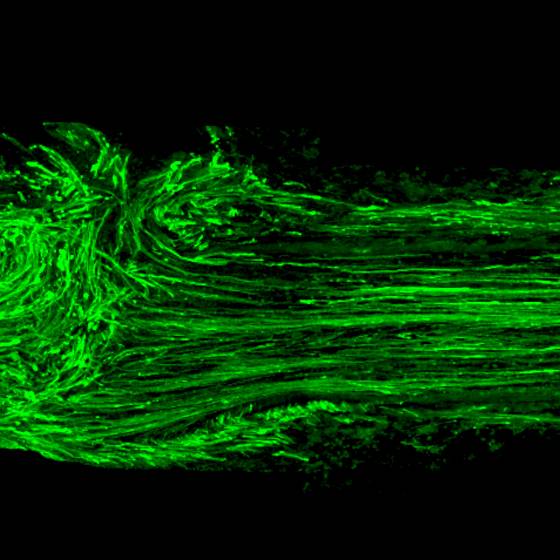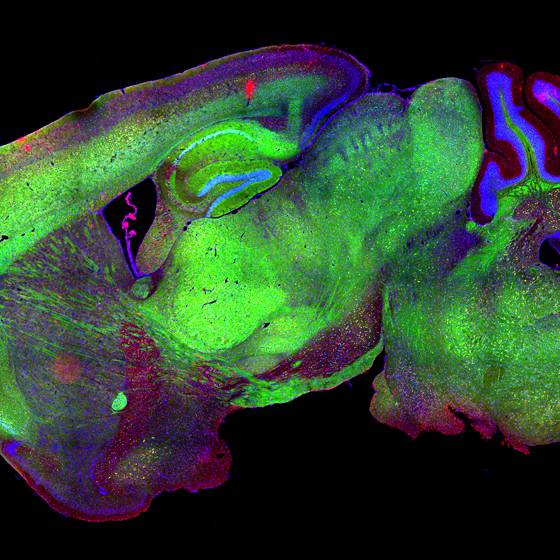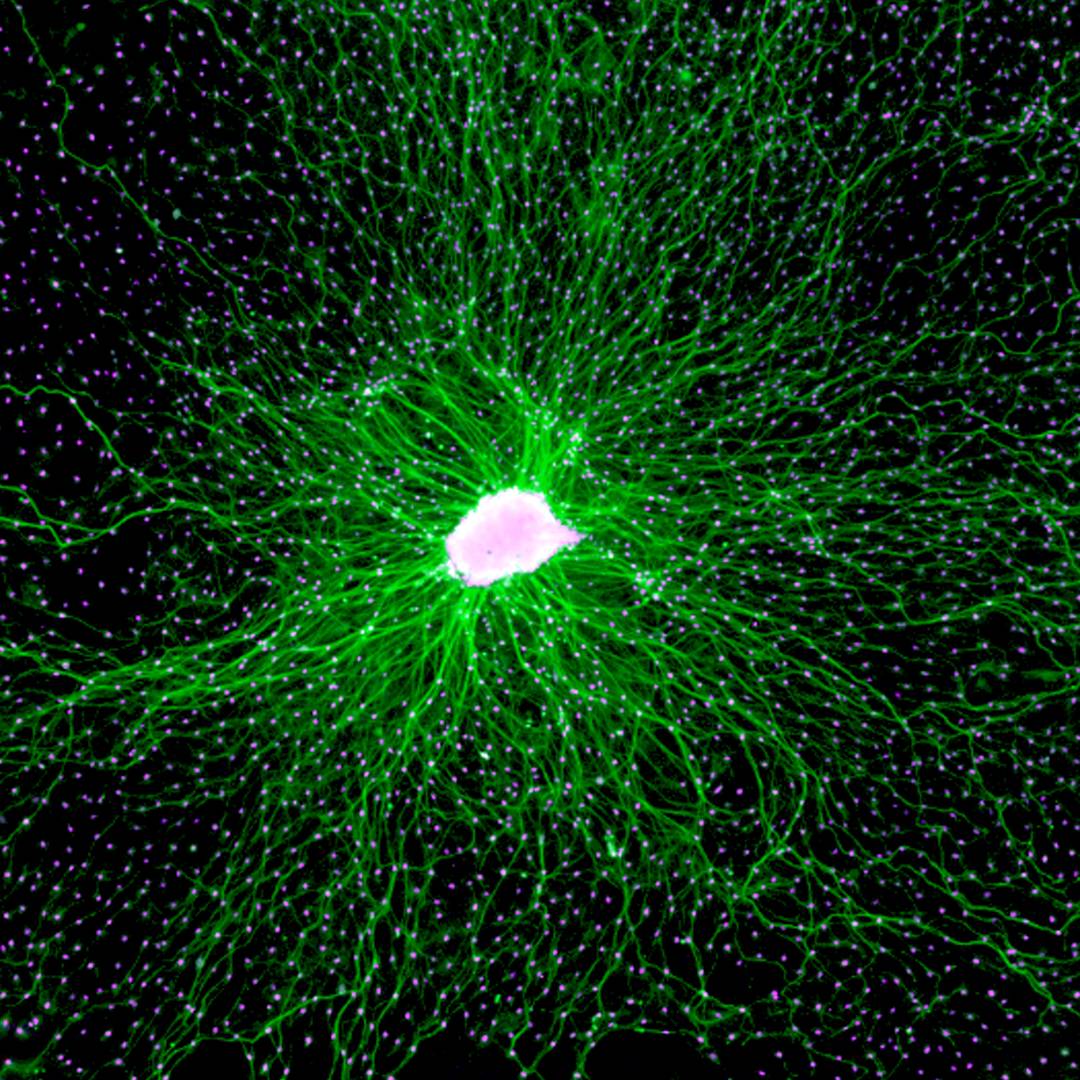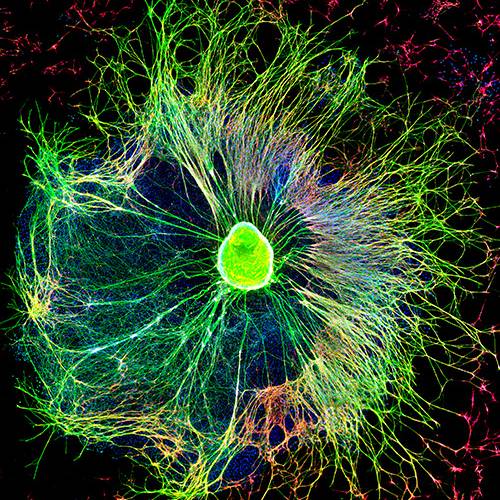Axonal Degeneration as a target for neuroprotection
Destruction programs are cellular mechanisms that have survival value when they operate under physiological control, but their malfunction could be deleterious for the organism. Apoptosis, or programmed cell death, is a well-known physiological destruction mechanism most apparent during development but persisting throughout the organism’s life. Other destruction programs are emerging as physiological processes that may not terminate in the destruction of the whole cell but only of restricted cellular domains. In the case of neurons, pruning of exuberant branches of terminal arborizations and degeneration of axons severed from their cell bodies are outstanding examples. Importantly, axonal degeneration is an early event in neurodegenerative condition including Alzheimer´s and Parkinson disease, as well as peripheral neuropathies. We are interested to define molecular players in the process of axonal degeneration to find therapeutic targets for neuroprotection.
Golgi staining of a mouse hippocampal section, with this technique, sparse neuronal labelling is obtained, which allows detailed analysis of individual neurons.

The degeneration of axons constitutes a salient feature shared by several neurodegenerative diseases that contributes to neuronal dysfunction and cell death. To date, the precise molecular and cellular mechanisms of axonal degeneration are under intense investigation. The morphological evidence indicates that axon degeneration as a consequence of aging and neurodegenerative diseases takes place in a retrograde fashion also known as dying back degeneration, which precedes cell death of the neuronal soma. Axon degeneration shares several characteristics with cell death by activation of the necroptotic signaling pathway, including mitochondrial dysfunction, ROS production, and intracellular calcium increase, and we have found that necroptosis inhibition by genetic or pharmacological means delays axonal degeneration in neurons from the peripheral and central nervous systems, as well as in model of Alzheimer´s and Parkinson Disease.
People involved

Macarena Arrazola
PI collaborator

PhD in Biological Sciences from the Catholic University of Chile. Studying the contribution of necroptosis in the age-associated axonal degeneration of the hippocampus, and the impact of using pharmacological approaches to revert neuronal dysfunction and cognitive impairment during aging, proposing necroptosis as an attractive target for the future development of geroprotective tools to treat age-related disabilities.

Daniela Rebolledo
Senior Research Assitant

BI am a Biochemist from Pontificia Universidad Católica de Chile (PUC) and PhD in Cell and Molecular Biology from the same university. My PhD thesis research was performed at the Physiology and Biophysics department, University of Washington. My research has focused on the physiology of the neuromuscular system and the pathological mechanisms behind neuromuscular disorders of diverse etiology.

Laura Gomez
Research Assitant

Medical Technologist from the U. Mayor. With experience in histological techniques, immunohistochemistry, immunofluorescence, biochemistry and molecular biology techniques. I am currently working on the role of RIPK3 in axonal degeneration in genetic models of Parkinson’s Disease , through Michael J. Fox’s project.

Rodrigo Leiva
Research Assitant

B.Sc(hons) degree in Neuroscience from the University of Glasgow and M.Sc in Integrative Neuroscience from the University of Edinburgh. I’m currently working on the role of axonal necroptosis and inflammation in the dopaminergic neurons of the nigrostriatal pathway in Parkinson’s Disease to assess it as a potential therapeutic target through the inhibition of RIPK3.
Related Publications
PUBLICATIONSDataNervous System FxPNS
octubre 5, 2021
Axons Provide the Secretory Machinery for Trafficking of Voltage-Gated Sodium Channels in Peripheral Nerve.
González C, Cánovas J, Fresno J, Couve E, Court FA, Couve A.
Proc Natl Acad Sci U S A. 2016 Feb 16;113(7):1823-8. doi: 10.1073/pnas.1514943113. Epub 2016 Feb 2.
PMID: 26839409
PUBLICATIONSDataPNSNeuroRegeneration
octubre 5, 2021
Schwann Cell Exosomes Mediate Neuron–Glia Communication and Enhance Axonal Regeneration.
Lopez-Leal R, Court FA.
Cell Mol Neurobiol. 2016 Apr;36(3):429-36. doi: 10.1007/s10571-015-0314-3. Epub 2016 Mar 18.
PMID: 26993502
PUBLICATIONSDataPNSNeuroDegeneration
octubre 5, 2021
Altered potassium channel distribution and composition in myelinated axons suppresses hyperexcitability following injury.
Calvo M, Richards N, Schmid AB, Barroso A, Zhu L, Ivulic D, Zhu N, Anwandter P, Bhat MA, Court FA, McMahon SB, Bennett DL.
Elife. 2016 Apr 19;5:e12661. doi: 10.7554/eLife.12661.
PMID: 27033551
PUBLICATIONSReviewPNSCNSNeuroDegenerationNeuroRegeneration
octubre 5, 2021
Injury to the nervous system: A look into the ER.
Valenzuela V, Oñate M, Hetz C, Court FA.
Brain Res. 2016 Oct 1;1648(Pt B):617-625. doi: 10.1016/j.brainres.2016.04.053. Epub 2016 Apr 23.
PMID: 27117870
Related News
Investigador del Centro CIB es reconocido por sus estudios sobre el microbioma
diciembre 23, 2021
El Dr. Gregorio Iraola, profesor adjunto del Centro de Biología Integrativa (CIB) U. Mayor, recibió el premio Talent Awards 2021 otorgado por el Instituto Pasteur en reconocimiento a su trabajo en la…
Ratones podrían ser la clave para el combate contra el Alzheimer
diciembre 21, 2021
El Dr. Felipe Court, director del Centro de Biología Integrativa (CIB) de la U. Mayor, explicó que a través de ensayos moleculares en roedores, se podría llegar a terapias más efectivas en cuanto a…




